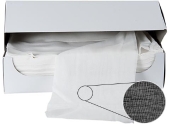
 3
3




 11
11




It's never too late to start! I retired to homestead on the slopes of Mauna Loa, an active volcano. I relate snippets of my endeavor on my blog : www.kaufarmer.blogspot.com
 6
6




out in the garden

 10
10




A human being should be able to change a diaper, plan an invasion, butcher a hog, conn a ship, design a building, write a sonnet, balance accounts, build a wall, set a bone, comfort the dying, take orders, give orders, cooperate, act alone, solve equations, analyze a new problem, pitch manure, program a computer, cook a tasty meal, fight efficiently, die gallantly. Specialization is for insects.
-Robert A. Heinlein
 8
8




I make a Maple Syrup instructional movie! Check it out HERE
SKIP books, get 'em while they're hot!!! Skills to Inherit Property
See me in a movie building a massive wood staircase:Low Tech Lab Movie
 13
13




Trying to achieve self-reliance on a tiny suburban plot: http://gardenofgaladriel.blogspot.com
 4
4




Chris Kott wrote:Beeswax food wrap.
Gardens in my mind never need water
Castles in the air never have a wet basement
Well made buildings are fractal -- equally intelligent design at every level of detail.
Bright sparks remind others that they too can dance
What I am looking for is looking for me too!

 8
8




 6
6




"The only thing...more expensive than education is ignorance."~Ben Franklin. "We can easily forgive a child who is afraid of the dark; the real tragedy of life is when men are afraid of the light." ~ Plato
 1
1




What's "neat" white vinegar? Does that leave them tasting like vinegar?Carla Burke wrote:Berries should be rinsed with neat white vinegar
I make a Maple Syrup instructional movie! Check it out HERE
SKIP books, get 'em while they're hot!!! Skills to Inherit Property
See me in a movie building a massive wood staircase:Low Tech Lab Movie




Mike Jay wrote:
What's "neat" white vinegar? Does that leave them tasting like vinegar?Carla Burke wrote:Berries should be rinsed with neat white vinegar
Thanks for the list of storage methods Carla! I found I can store my beets and carrots in damp planer shavings instead of sand. It's lighter to move the buckets and when it makes a mess on the floor it is easier to sweep up.
"The only thing...more expensive than education is ignorance."~Ben Franklin. "We can easily forgive a child who is afraid of the dark; the real tragedy of life is when men are afraid of the light." ~ Plato
 1
1




Pearl Sutton wrote:
Might be able to wax some of the cotton bags. Open them up, wax, then resew the seam.








Gail Saito wrote:I purchased organic muslin bags from wellearthgoods.com and that's what I use when shopping for produce. The trick is to dampen the bag before placing it in the refrigerator. It definitely helps to keep the produce fresher longer. What I struggle with is cheese. I tried bees wrap, but I don't seem to eat it quick enough and it ends up becoming hard and crusty. Any suggestions??
out in the garden

 1
1








I make a Maple Syrup instructional movie! Check it out HERE
SKIP books, get 'em while they're hot!!! Skills to Inherit Property
See me in a movie building a massive wood staircase:Low Tech Lab Movie
 4
4




 2
2




A human being should be able to change a diaper, plan an invasion, butcher a hog, conn a ship, design a building, write a sonnet, balance accounts, build a wall, set a bone, comfort the dying, take orders, give orders, cooperate, act alone, solve equations, analyze a new problem, pitch manure, program a computer, cook a tasty meal, fight efficiently, die gallantly. Specialization is for insects.
-Robert A. Heinlein




Perfect The Dwelling Land and support the kickstarter! https://www.kickstarter.com/projects/paulwheaton/garden-cards?ref=90v0pa
 1
1




 4
4




Whathever you are, be a good one.
___________________________________

|
Looky! I'm being abducted by space aliens! Me and this tiny ad!
The new purple deck of permaculture playing cards
https://www.kickstarter.com/projects/paulwheaton/garden-cards
|






